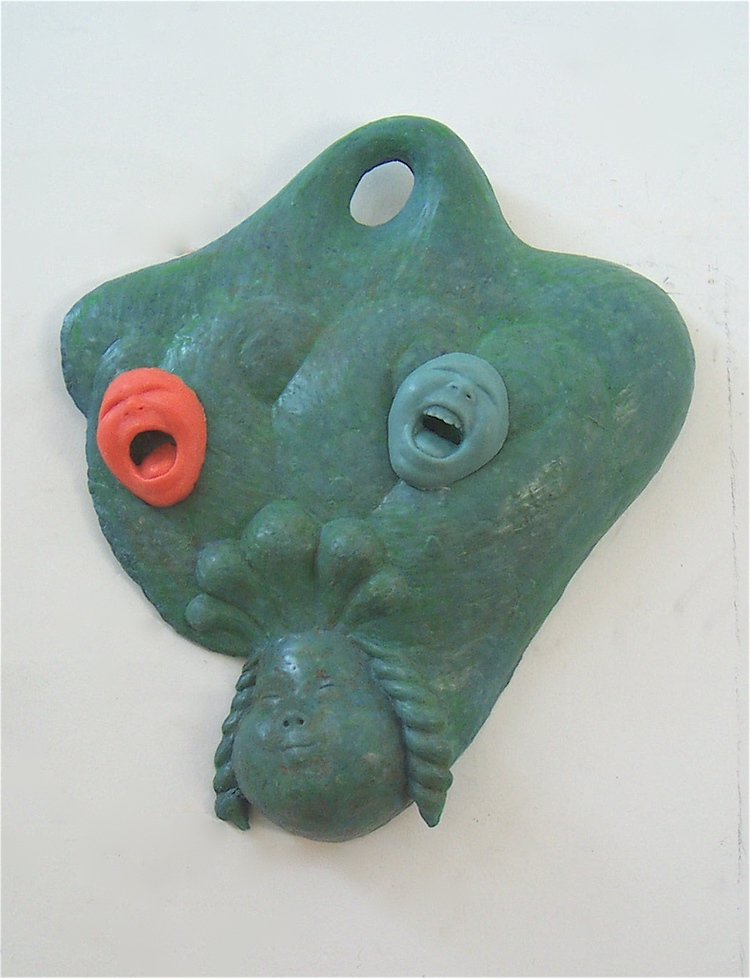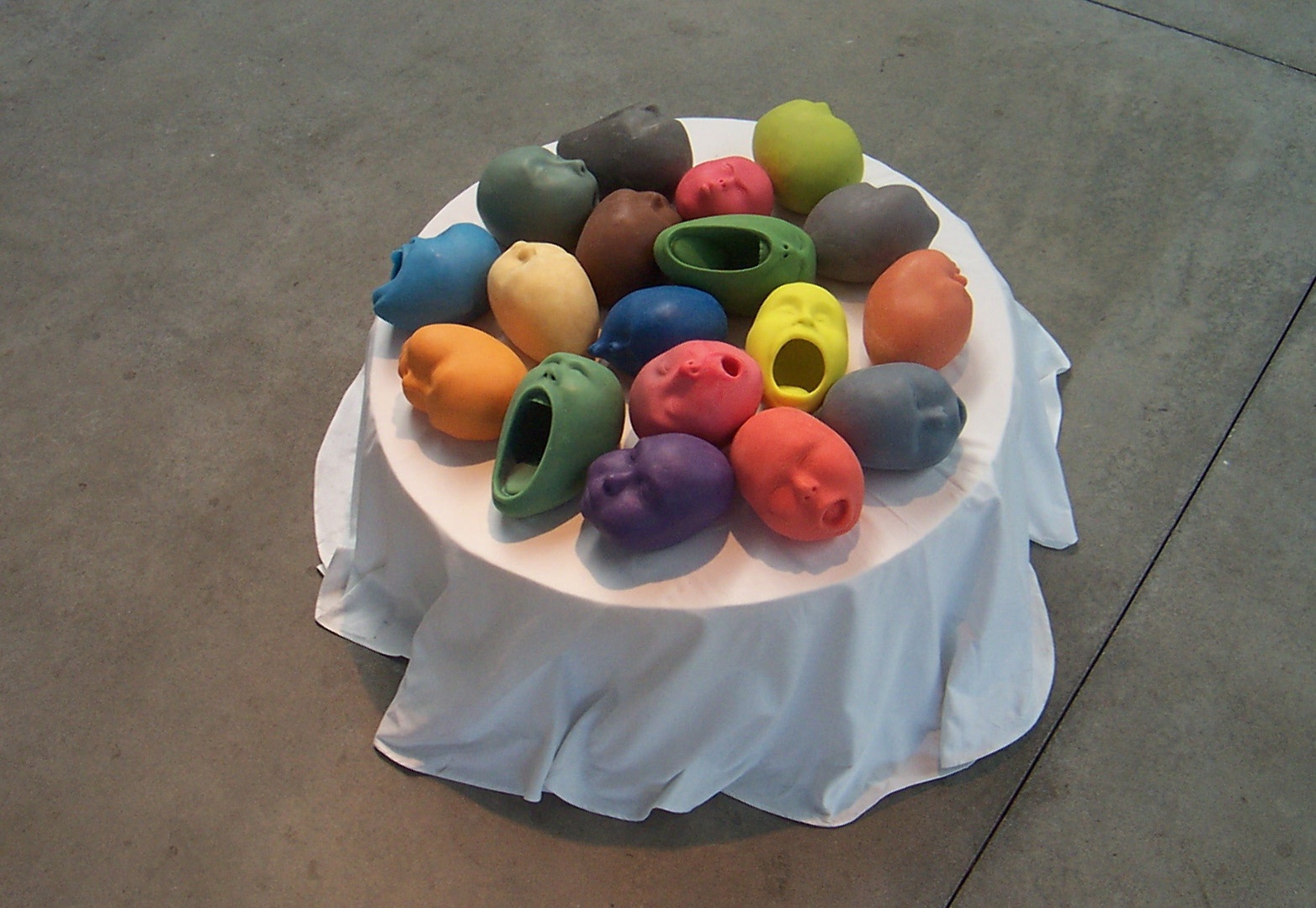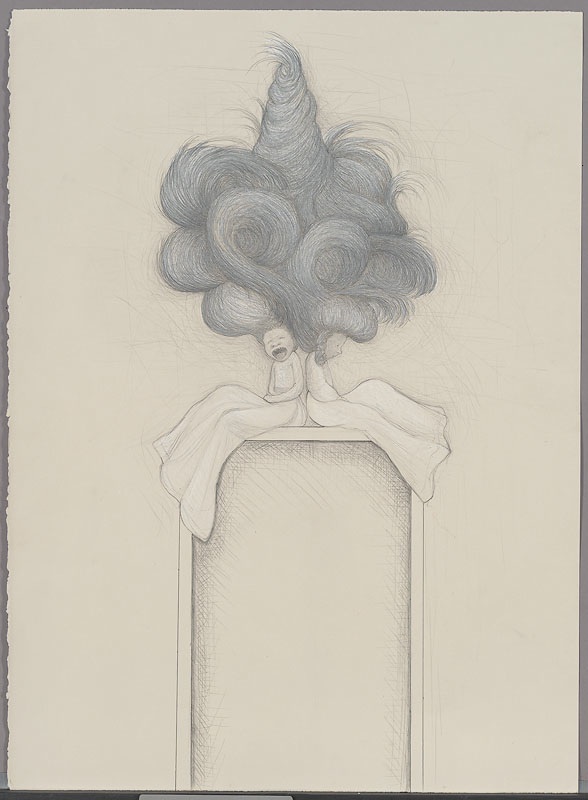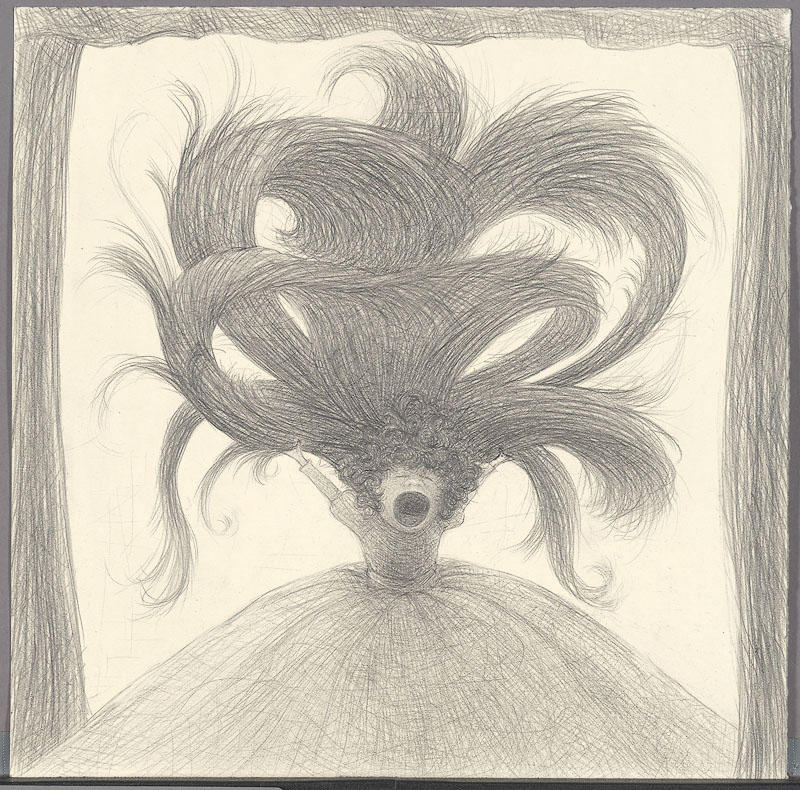AFTER THE AGE OF REASON
Recent events have led me to meditate on just how we arrived at this strange and somewhat apocalyptic moment in history. How is it, for instance, that the 16th century writer Montaigne was more comfortable thinking and writing about sex and love than are many educated Americans today? And how can it be that gender still determines more than ability? These questions have no answers, but while thinking about them, I've found myself drawn to some memorable cultural contributions made during the early years of the Enlightenment. These high points include, in no particular order, Really Big Hair, courtesy of that fashionista Marie Antoinette; Wilhelm Leibniz’ (tragically unsuccessful) search for a universal language, which could have resolved all future failures in communication; and Thomas Paine’s writings on politics and religion.
Inspired in part by these images and ideas, the drawings and sculptures in this body of work invoke a baroque/rococo-tinged theatrical narrative. Books: containers of information, knowledge and belief, are involved in some kind of questionable relationship with hair, that symbol of disorder, messy emotions and an obsession with superficial appearances. Airborne girls wearing astonishingly large wigs appear in various scenes, but whether they are playing, learning, or just tickling our superegos with their strange expressions, it’s hard to say. A series of sculpted heads evokes the meeting place between cuteness and the grotesque.
The use of the word 'after' in the title of this body of work suggests that the Age of Reason: this remarkable period of history that began some 350 years ago, during which there have been near-constant revolutions, many astonishing inventions and a fantastically accelerated consumption of resources-- has now ended. 'After' is also used as it is by art historians, however, as a term that describes a work in the style of a leading maker, as in “a painting after Tiepolo.” Used this way, this word is meant to express my acknowledgement of and admiration for past masters of the Eurocentric tradition, from Bernini to Brancusi. Inasmuch as the present demands something different from artists, I am grateful to have their shoulders to stand on. The view is better from up here.


















